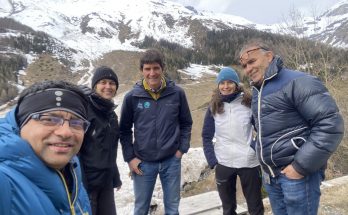In the south of Switzerland, the canton Ticino corresponds to the transition from a pre-Alpine to a fully Alpine setting. It is exposed to great number of natural hazards, including gravitational movements, due largely to its topography and climate. Rockfalls, debris flows, floods, landslides, and avalanches are recoded in the cantonal StorMe inventory, by the Forestry Section from the Republic and Canton of Ticino, which contains all the relevant information form recorded natural events in the last 20 years.
Risk management in this setting is costly, with an annual invoice in the order of millions of swiss francs for base studies, precautionary measures such as mitigation infrastructure, the protection and maintenance of woods, and monitoring. Since landslide inventories are important sources of information for hazard and risk assessment, the analysis and use of this data is crucial to better understand the active and recurring processes present at a regional scale.
Relevant controlling parameters for the characterization of an event include geometrical aspects of the event itself such as area, volume, or angle of reach (Fahrböschung); as well as external controlling parameters related to the topography, hydrography, land use, and geology as well as climatic conditions. Determination of the controlling parameters for specific movement types or settings is useful to estimate the size, frequency, and potential distribution of future events.
Here, a statistical analysis was carried out using three types of data from the StorMe inventory: spatial data (points and polygons) and linked attributes; as well as additional data collected from various sources for each of the categories of controlling parameters. The aim was to better comprehend spatial and temporal distribution of events in the study area, their geometric characteristics such as area, volume, length, height difference and angle of reach; and their relationship with the selected controlling parameters: topography, hydrography, land use, and geology.
During the initial stage we pre-processed the available inventory data, collected the missing attributes (maps, layers, etc.), calculated the necessary derived attributes (slope, curvature, elevation, area, perimeter, angle of reach…) and joined spatial and categorical data. First, a simple statistical analysis (mainly univariate and bivariate analysis) was carried out regarding spatial and temporal distribution, distributions for each of the selected controlling parameters (topography, hydrography, land use, and geology), and distribution of variables specific to each movement type (rockfalls, debris flows, floods, landslides, and avalanches). A more detailed analysis involving regression and power laws were then carried out for previously selected variables, which were compared to the results from other authors.
We determined that the controlling parameters which show a higher correlation with the events and could be used for modelling in the study area are slope, aspect, terrain roughness index, topographic wetness index, and general lithology. Of the geometrical aspects pertaining to the event itself, the most important parameters are area, length, height difference, volume, and angle of reach.
Other results include the predominance of events in the districts of Blenio, Mendrisio, Locarno and Bellinzona, where debris flows and avalanches, debris flows, rockfalls, and rockfalls prevail, respectively. A tendency is detected with southwest ward facing slopes for avalanches, and east/west facing slopes for debris flows. Most events occur in forested areas and avalanches occur mostly in high alpine unproductive land.
Geology shows a clear predominance of metamorphic lithologies both spatially and in the event inventory, whereas normalized values indicate that this is in fact the least prevalent rock type. For ages we have a prevalence of Permian and Triassic ages, followed by Tertiary and Quaternary for normalized counts. Finally, prevailing tectonic units are the Lower Penninic Nappes, as well as Southern and Ultra-Helvetic sediments and layers.
The calculated angle of reach shows similar median and mode values of around 22°/26º, 29°/34º, 34°/35° and 41º/45°, for debris flows, avalanches, landslides, and rockfalls respectively. Regarding the movement types, specific slope distributions for dry versus wet snow in avalanches are shown, with a peak angle of reach at around 35º. Rockfalls are generally constituted by a small number of blocks (< 5) with a median volume of 1 m3. Landslides most are shallow slips in loose materials caused by toe erosion. Finally, debris flows are mostly between 0 a 5 m thick, with a significant timber volume and a peak discharge below 100 m3/s.
From the detailed analysis we obtain a significant power law correlation between the deposit length and the height difference, comparable to Corominas (1996), showing only slightly different behaviour depending on the movement type. No control of the height fall on the angle of reach was found and the correlation between the deposit volume and the angle of reach is weak, and only present for debris flows and avalanches in specific conditions. The comparison of the deposit volume with the movement area, on the other hand shows a positive correlation, similar to what was found by Guzzeti et al., (2009), again with slight distinctions for each movement type. From the rockfall sub-inventory the distribution of rockfall volumes was analysed and a power law relation, very similar to Dussauge et al., (2003), was found with a much larger dataset.
Possible further work with this inventory includes the application of machine learning techniques (weighted regression and classification) for the establishment of the precise relationships between the different controlling parameters for each movement type.

